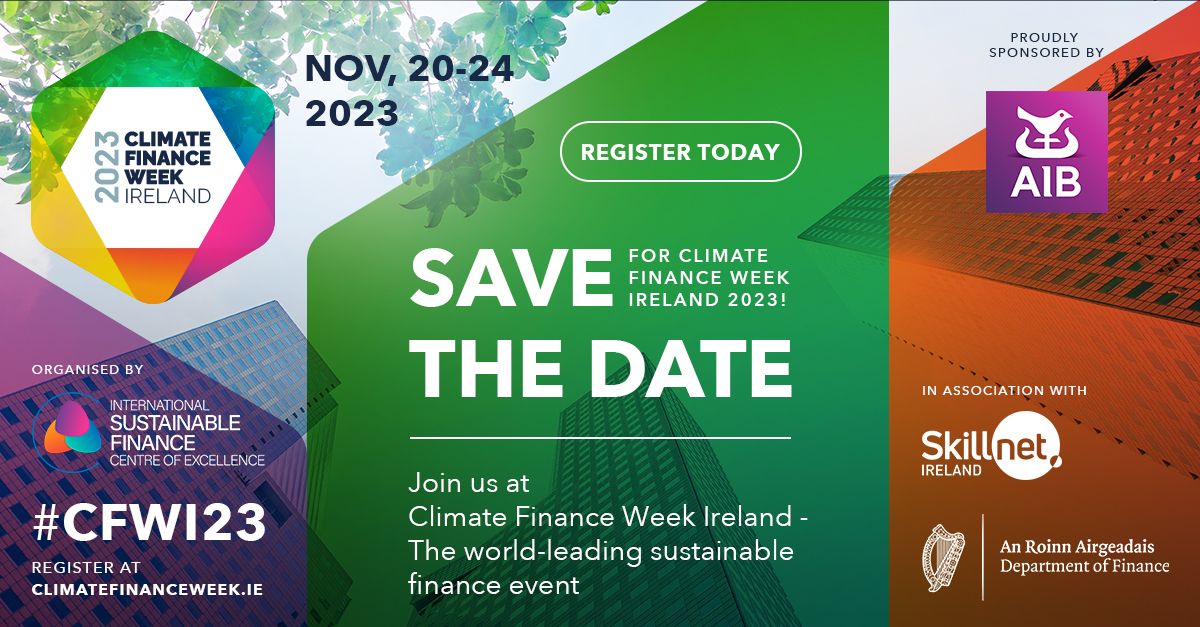Sustainable Finance Measures in 2022
2022 saw significant movement in the regulatory landscape in tandem with the politicisation of sustainable finance.
These movements have been driven by macroeconomic volatility as well as challenges around the implementation phase of sustainable finance in some jurisdictions.
ESG regulations for investors: the road to investors’ net-zero transition plan
For the first time, China’s banking and insurance regulator specified green finance and ESG related requirements, moving from an encouragement to a requirement approach monitored by robust implementation and assessment to ensure compliance.
In 2022, the China Banking and Insurance Regulatory Commission introduced Guidelines which require banking and insurance to establish strategies, process and capacity to support the transition to a sustainable future.
Notable developments include the focus on real-world outcomes (the alignment of portfolios with carbon neutrality goals) and on stewardship (institutional investors’ roles in driving decarbonisation solutions).
The Glasgow Financial Alliance for Net Zero (GFANZ) recommended that investors develop a net-zero transition plan, a call echoed by the UK Transition Plan Taskforce launched in April 2022, to develop private sector climate transition plans and the EU draft Sustainability Reporting Standards that contain disclosure requirements.
Overall, China is moving forward with a range of policy and regulatory reforms designed to support green finance objectives in line with carbon neutrality objectives.
The Ministry of Ecology and Environment introduced enhanced environmental disclosure requirements to listed companies and bond issuers. Four main financial regulators issued a plan to improve ESG regulation during the 14thFYP period, including disclosure, evaluation and transition finance.
In addition, China established a standardized carbon emission accounting system and published a self-regulated framework to unify domestic green bond regulation.
Global ESG disclosure requirements and Investors’ duties
Europe
Regulatory interest in fund classifications and disclosure obligations is ramping up globally amid concerns over greenwashing issues arising out of self-classification.
This trend is being driven by the EU SFDR classifications system (Articles 6, 8 and 9) which strengthen the quality of disclosure starting January 2023.
The EU has been the most progressive jurisdiction in instituting mandatory sustainability reporting by 2023. The newly adopted Corporate Sustainability Reporting Directive supports the SFDR in providing investors with comparable and meaningful sustainability data.
In addition, asset class-specific reforms to EU directives (MiFID II, Solvency II) were adopted to strengthen investors’ fiduciary duties. The Shareholder Rights Directive II revision – the EU’s stewardship tool which introduces shareholder responsibilities – is expected in 2023.
The UK continues to establish itself as a leader in sustainable finance with the package of reforms under the Sustainability Disclosure Requirements which cover sustainability objectives, strategy and metrics, the proportion of assets aligned with the UK Taxonomy, and the approach to investor stewardship.
The department for Work and Pensions also introduced new disclosure requirements for pension schemes.
The Americas
Last year saw the U.S. SEC issue a proposal to standardize registrants’ climate-related disclosures for investors and proposed fund manes requirements to reduce greenwashing.
The Canadian Securities Administrators issued guidance to bring clarity to ESG-related fund disclosures and in April 2022, the Canadian federal government released its 2022 budget, which proposed mandatory climate-related reporting requirements for federally regulated banks and insurance companies.
In Latin American markets, Brazil, Colombia, Chile and Mexico have taken steps to strengthen the regulatory framework for the application of ESG factors in the investment process.
Regulators in Brazil have developed advanced domestic ESG frameworks and standards. The Brazilian Securities and Exchange Commission Resolution No. 59 calls for the disclosure of additional ESG information, with a focus on climate and diversity standards, while the Brazilian Association of Financial and Capital Market Entities expanded its self-regulation on sustainable investment funds for fixed-income and equity funds.
The Mexican National Banking and Securities Commission developed the ESG self-diagnosis tool of voluntary use for financial institutions that will inform the CNBV on the general state of FIs regarding ESG.
Chile’s ESG regulatory journey has evolved with the Financial Market Commission – the country’s securities watchdog – now required to listed companies to disclosure ESG practices in annual reports.
In Argentina, ESG standard-setting has been undertaken by the Comisión Nacional de Valores (CNV) that would be publishing its guide on voluntary reporting and disclosure of ESG information.
Asia-Pacific
In Asia-Pacific, ASEAN is developing its supervisory Sustainable and responsible Fund standards to create a common supervisory basis for Asian regulators.
Japan’s Financial Services Agency (FSA) recommended including sustainability information in annual statutory financial reporting. The FSA outlined principles for asset managers with ESG funds and the Japan Stewardship Code is scheduled to be updated in 2023.
The Monetary Authority of Singapore issued a circular on fund naming, disclosure of strategy and reporting. The Philippines’ SEC issued draft rules to require sustainable funds to adopt ESG factors as key investment focus.
The Australian Securities & Investments Commission released a guidance for how funds can avoid greenwashing when promoting sustainability-related products and the Australian Treasury released a consultation paper on climate-related financial disclosures.
The global surge in disclosure regimes
2022 saw the proposed draft of the main climate disclosure standards from the International Sustainability Standards Board (ISSB) EFRAG and the U.S. SEC.
• US SEC consulted on mandatory climate reporting in the annual reports and registrations statements of public companies registered, in line with the work of the TCFD and the ISSB. Under the rule proposal, companies would be required to disclose their Scope 3 emissions as early as for fiscal year 2024.
• EU’s leadership in sustainability reporting resulted in the provisionally agreed CSRD and in EFRAG latest draft on European Sustainability Reporting standards.
• The ISSB standards aim to establish a common global baseline on general sustainability-related and climate-related disclosures through a building block approach that will drive more comparability and consistency.
While IFRS and EFRAG announced at COP27 their common work towards maximizing interoperability of their standards regulatory inconsistencies remain in their principles, structure and measurement bases.
In particular, the draft ESRSs focus on double materiality and on the needs of broader stakeholders, while the ISSB focuses on enterprise value.
Definitions of materiality differ across jurisdiction with the U.S., Singapore, Canada, Hong Kong and Japan focusing on financial materiality and the E.U. and UK explicitly referring to double materiality.
Green central banking
Since 2015, emerging economies have taken systemic control of macro-financial dynamics, guiding capital allocation to promote specific sectors. In contrast, central banks and financial regulators in developed economies have taken mainly a risk approach, ensuring the stability of the financial system.
Climate stress test: An increasing number of authorities are requiring FIs to conduct climate-risk stress tests, with regulatory requirements in 18 jurisdictions.
In 2022, Bank of England Climate Biennal Exploratory Scenario, ECB economy-wide climate stress test and the Bank of Canada Climate Scenario Analysis Pilot found that:
- Banks are still at an early stage in terms of factoring climate risks into their internal credit risk stress-testing models.
- Banks do not set interim targets or limits to their risk-taking with a view to fulfilling their long-term strategic commitments.
- Tests highlighted deficiencies in data and firms’ modelling techniques with reported scope relying on proxies and little consideration of climate risk by management.
The Hong Kong Monetary Authority announced in June 2022 its two-year plan to integrate climate risk into banking supervisory processes.
Banco Central Do Brasil’s first climate risk evaluation exercise was published in the Financial Stability Report (October 2022) consisting of mapping credit exposure to borrowers’ transition risks and conducting sensitivity analysis based on climate scenarios.
Central Banks in Peru, Brazil, Mexico, Chile, Colombia, U.S., Canada are also considering incorporating climate-related risks into their reserve management frameworks.
Taxonomies
More than 20 countries or regions gave developed green or environmental Taxonomies, including 2 jurisdictions with social Taxonomies and 3 with transition Taxonomies. They take divergent approaches in terms of granularity and prescriptiveness.
EU: few developments including a product-level disclosure input requiring investor that market financial products with an environmental objective to disclose the percentage of the underlying investments that are taxonomy-aligned.
The EC adopted the inclusion of gas and nuclear in the taxonomy, which has ruled out the taxonomy from the use of science-based evidence and eroded the taxonomy’s legitimacy, and beyond the integrity of the EU’s international climate leadership role.
Singapore is positioning itself as a leading green finance hub in Asia and developed a Taxonomy that would serve financial institutions in the entire ASEAN region. This was followed by the Bank Negara Malaysia Climate Change and Principle-based Taxonomy.
In 2022, new prescriptive regulations include:
- The South African Treasury publishing its final green taxonomy with the same objectives as the EU Taxonomy and a reference to Just Transition. Over time, a social taxonomy will be developed.
- Sri Lanka’s central bank launched in collaboration with IFC its Green Finance Taxonomy, which considers the IPSF’s Common Ground Taxonomy.
- Indonesian green taxonomy has applied the traffic light system to represent the type of activities from a sustainability lens.
- The Mongolian Green Taxonomy.
- The Colombia national taxonomy framework with an emphasis on land use.
- The Australian Sustainable Finance Institute Taxonomy project
Nature Finance
Despite only a limited number of policy tools having been developed and tested to address nature and biodiversity loss, there are a range of options for the integration of nature and biodiversity loss considerations into existing policy frameworks.
In April 2022, NGFS acknowledged that nature-related risks could have significant macroeconomic and financial implications. This is the first time that central banks and supervisory authorities have recognized the potential for biodiversity loss to threaten financial stability. The Dutch Central Bank is developing scenarios to assess the impact of biodiversity loss on financial stability. This will lead to central banks and supervisors assessing the impact of biodiversity loss on financial stability.
CBD COP15: The Kunming-Montreal Global Biodiversity Framework sets out a clear mandate for private financial flows to align with the 2050 Vision of “Living in harmony with Nature”, providing the finance sector with a landmark agreement for biodiversity-related financial-decision making.
TNFD released its beta version – the first integrated approach to incorporating nature-related risk and opportunity analysis into the heart of corporate and financial decision making. Five joint reports on TNFD market readiness, data for nature-related disclosure, and testing of the exploratory framework in staples sector were also published last year to inform the forthcoming framework.
Lastly, the ISSB’s plans to incorporate biodiversity and just transition disclosures recognize calls by global investor groups for urgent action on the disclosure of social and nature-related risks. While initially focused on enterprise value rather than impact, a recent ISSB staff paper asked for a description of “how value created, preserved or eroded for an entity (and its providers of financial capital) is inextricably linked to other stakeholders, society and the natural environment”.
Real-economy policy reforms
The U.S. Inflation Reduction Act puts the US on track to achieving its 2030 NDC. It is the largest climate bill in United States history, with strong domestic content provisions.
It supports the clean energy transition using an industrial policy approach with heavy public spending through production and consumption subsidies.
The funds will be delivered through a mix of tax incentives, grants, and loan guarantees. Clean electricity and transmission command the biggest slice, followed by clean transportation, including electric-vehicle (EV) incentives.
However, the Supreme Court June decision could adversely impact climate-related proposals of US federal agencies.
Under the EU Fit for 55 package and the Corporate Sustainability Due Diligence Directive (CSDD) the EU moved ahead with real-economy policy reforms related to climate and social policies. This also includes the Carbon Border Adjustment Mechanisms, renewable energy and energy efficiency objectives.
On biodiversity risks, EU will not accept products made or based on land that was deforested after the end of 2019. Companies with high deforestation exposure (through 6 commodities) will need to improve their due diligence and supply-chain monitoring programs.
Key Developments:
• Market-fixing approaches continue to be prioritised, despite calls for more normative and prescriptive policy instruments to address greenwashing or social-responsibility spin.
• Geopolitical instability, economic volatility and worries about a global recession have pushed policymakers to consider the goals of sustainable finance regulation against economic and energy resilience objectives.
• Despite the highly politically contested inclusion of natural gas and nuclear in the taxonomy, the EU continues to lead in the development of standards globally.
• The U.S. Inflation Reduction Act has placed the U.S. on a path to reaching its 2030 targets, while maximizing its share of new clean energy markets, resulting in trade tensions with the EU regarding levels of subsidisation and domestic content requirements.
• Alongside growing ESG investing scene in Asia, a broader regulatory development is happening ahead referencing developments in Europe, with Singapore, Malaysia, India, Hong Kong SAR and Japan leading the charge in ESG.
• Globally, there are strong signs of financial authorities starting to align their operations with net-zero.
• As stated by the FSB report, industry-led recommendations have developed into substantial regulatory momentum to finance the real economy’s transition to net zero while ensuring financial stability.
• Signs of further fragmentation, driven by differing regional priorities, economic competition and the defense of economic sovereignty still being persistent obstacles to global convergence on ESG-related regulations.
• Debt climate nexus: confluence of environmental and developing world’s debt crisis pushing for an overhaul of the global financial system and major debt restructuring for climate-vulnerable countries.
• The Just Transition takes on increasing importance in international policymaking.
• Regulatory scrutiny over green bond issuance increases.






Leave a comment